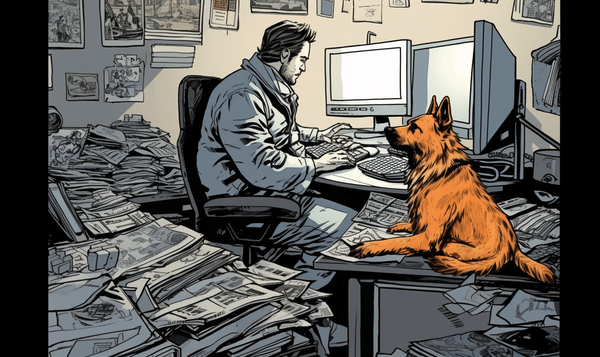In a headline-grabbing announcement that has tongues wagging across the ad tech industry, Mark Zagorski, CEO of DoubleVerify, has been appointed to the board of directors at Outbrain. Yes, that’s the same Outbrain that routinely benefits from the brand safety ratings issued by DoubleVerify. If it sounds like a conflict of interest, that’s because it most certainly is, at least to onlookers like Nandini Jammi and a chorus of industry insiders who have been quick to call out the potential ethical implications.
Yaron Galai, Outbrain’s Co-Founder and Chairman, heralded Zagorski’s board inclusion as a major coup, proclaiming him “one of the greatest leaders in the ad industry.” According to Galai, Zagorski’s unrivaled expertise in data, targeting, and privacy is set to bring invaluable insight as Outbrain deepens its integration with ad agencies. This glowing endorsement, however, seems to sidestep the glaring issues at hand.
Nandini Jammi, Co-Founder at Check My Ads Institute, responded with a mix of humor and disbelief at the news. Through a social media post laced with incredulity, she highlighted the irony of a brand safety CEO auditing a client while simultaneously holding a governance role. “We’re just doing full-on mafia now?” Jammi quipped, suggesting that the relationship between DoubleVerify and Outbrain now resembled less of a regulatory dynamic and more of a syndicate operation.
Adding fuel to the fire, Jammi referenced recent incidents that cast doubt on DoubleVerify’s impartiality. She noted an instance earlier in the month when DoubleVerify awarded a controversially high brand safety score to a platform allegedly riddled with extremist content. Shortly thereafter, ads from DoubleVerify’s client Hyundai were found on accounts promoting hate speech. These blunders present a stark contrast to the “exceeding 99.99%” safety score touted by DoubleVerify, calling into question the effectiveness and independence of their evaluation processes.
Also, recent investigations have cast serious doubts over the integrity of the brand safety ratings provided by DoubleVerify. NBC News uncovered a disturbing volume of pro-Nazi content flourishing on a platform known as X, directly contradicting DoubleVerify’s previously reported safety rates. Investigative reports by journalists like Ben Goggin revealed that over 150 premium accounts were actively disseminating pro-Nazi material, with numerous posts gaining viral traction and amassing millions of views — potentially translating into significant ad revenue. This exposé starkly contrasts with DoubleVerify’s assurance of a 99.99% Brand Safety Rate for X, a discrepancy that not only questions the efficacy of DoubleVerify’s auditing processes but also its commitment to ethical advertising standards.
Social media reactions have further amplified concerns about these discrepancies. Rachel Gilmore, reflecting a common sentiment among observers, questioned the high safety rating on Twitter, highlighting the gap between DoubleVerify’s public claims and the reality of content moderation on X. The stark difference between publicly shared data and investigative findings points to either a grave oversight or a possible compromise in the methods used by DoubleVerify to calculate and report safety metrics. Such revelations are particularly problematic for Zagorski’s new position at Outbrain, as they undermine trust in his ability to ensure unbiased oversight in an industry where brand safety and integrity are paramount. This ongoing issue necessitates a rigorous reassessment of how brand safety metrics are evaluated and reported in the rapidly evolving digital landscape.
Stephen Sumner, a retail growth expert, likened the scenario to having a fox guard the henhouse. “If you want to control the drug dealing at a nightclub, make sure your guy is the doorman,” he commented, pointing to the strategic positioning that might be at play with Zagorski’s board membership. Similarly, Glen W. Roberts II, an international advisor, mocked the nonchalance with which both parties seemed to approach the conflict of interest. He sarcastically noted that Zagorski would bring “new levels of authority on brand integrity,” hinting at the likely spin we’ll hear from PR teams.
Amidst the controversy, another significant misstep by DoubleVerify has come to light, further complicating the narrative around Mark Zagorski’s appointment to Outbrain’s board. For nearly five months, DoubleVerify claims that they mistakenly presented incorrect brand safety ratings for a digital platform identified only as X. Specifically, from October 24, 2023, to March 14, 2024, the DoubleVerify dashboard displayed brand safety scores significantly lower than the actual rates. Where X’s actual Brand Safety Rate stood at a near-perfect 99.99%, DoubleVerify’s metrics at times showed figures as low as 70%. This substantial discrepancy not only misinformed advertisers about the safety of their ad placements but also potentially impacted financial and strategic decisions based on flawed data. While this claim goes one way, we have to wonder how many times it went the other?
As Zagorski settles into his new role, the industry watches closely. The intertwining of a regulatory figure with a client company raises significant concerns about the ability to maintain impartiality in brand safety assessments. With ad tech’s integrity on the line, the question remains: Can DoubleVerify effectively police its own while its CEO has a vested interest in one of its major clients?
This unfolding drama not only tests the ethical boundaries of business conduct in digital advertising but also sets a precarious precedent. If the watchdog and the watched are one and the same, who can advertisers trust to safeguard their interests in an increasingly complex digital ecosystem? The answers, though not yet clear, will certainly shape the future of advertising ethics and governance.




